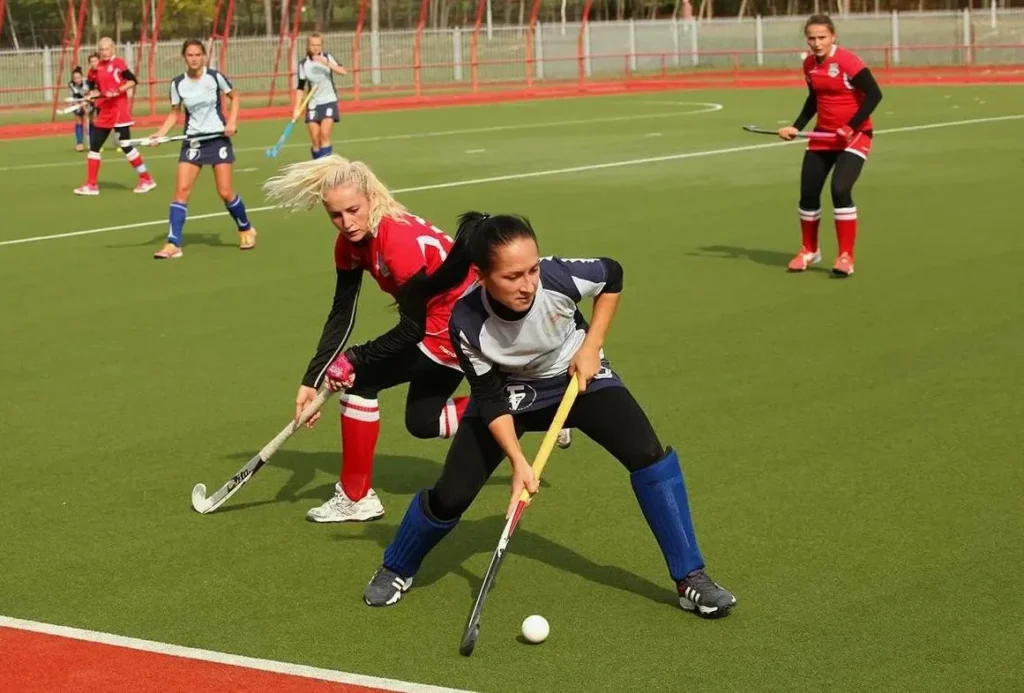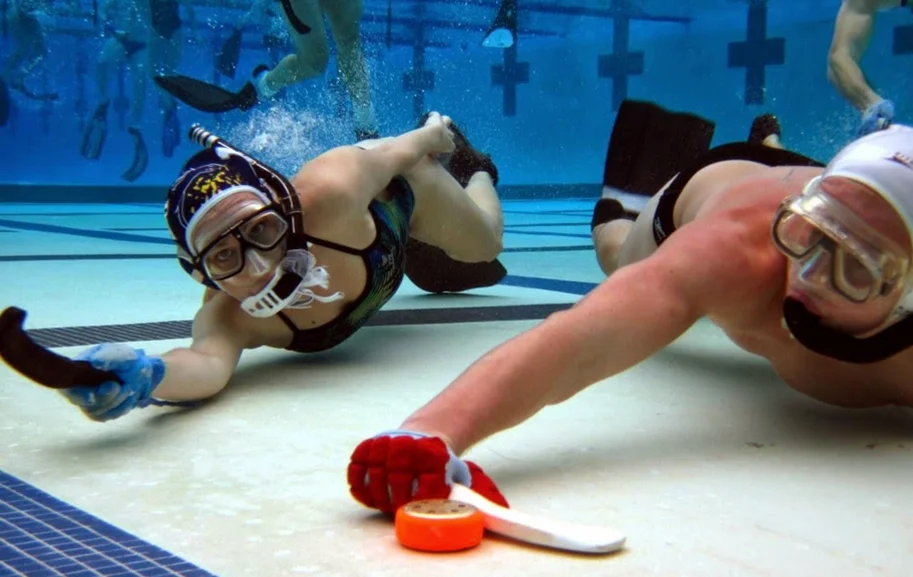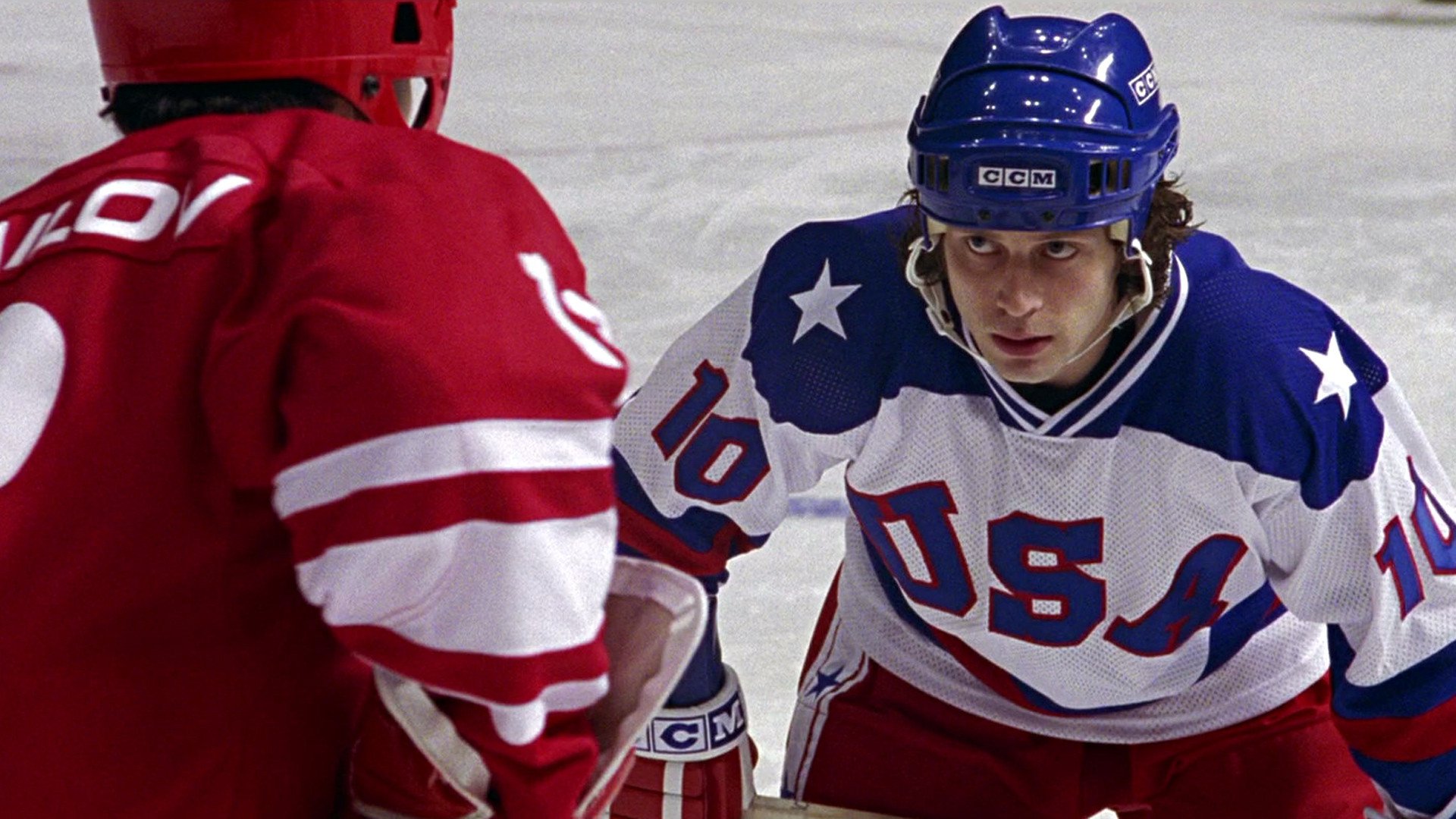When the standard ice, strict rules, and predictable puck get boring, new formats emerged where sports revealed itself in a new way. The most unusual types of hockey prove that it’s not the surface that defines the game, but passion, skill, and imagination.
Bandy: speed, width, strategy
Bandy is not just a variation, but a full-fledged hockey world. This type originated in England but developed in Scandinavia and Russia, where Russian hockey became a national pride. Instead of a puck, there’s an orange ball. Instead of traditional ice, a field the size of a football field. The rink stretches up to 110 meters in length and 65 meters in width. There are 11 players on each side. A stick with a curved hook and a light ball that reaches high speeds are used.

The rules of bandy include two halves of 45 minutes each, offside like in soccer, and the need for strategic positioning. The goalkeeper is without a stick but in massive defense. The main key — the most unusual types of hockey — are showcased here through a synthesis of soccer tactics and the dynamics of the classic version.
Field Hockey: From the British Empire to Olympic Honor
 This type originated in colonial India and gained popularity in Commonwealth countries such as Australia, the Netherlands, and Germany. Players use thin curved sticks and a hard plastic ball. The field is 91.4 by 55 meters, with artificial turf. There are 11 participants in a team, including a goalkeeper. The game rules limit contact, prohibit lifting the stick above the shoulders.
This type originated in colonial India and gained popularity in Commonwealth countries such as Australia, the Netherlands, and Germany. Players use thin curved sticks and a hard plastic ball. The field is 91.4 by 55 meters, with artificial turf. There are 11 participants in a team, including a goalkeeper. The game rules limit contact, prohibit lifting the stick above the shoulders.
Its Olympic status gives the discipline authority. A period consists of four 15-minute segments, and the match requires endurance, agility, and strategic thinking.
Indoor Hockey: Minimum Space, Maximum Maneuverability
When cold is out of fashion and summer lasts all year round, indoor hockey steps onto the arena. Included in the list as one of the most unusual types of hockey. This format adapts the grass game to indoor spaces. The field is 40×20 meters, with boards being mandatory. Six players per team. Key features include no high shots and increased importance of dribbling. Game rules require using only the outer side of the stick. The field is smaller, but the pace is faster. A scored goal is the result of precise coordination and instant reaction.
Ball and Broom Hockey: When Sport Turns into a Celebration
A format involving balls and even… brooms? Definitely. The ball version is widely practiced in Russia and Sweden, especially in amateur leagues. But the real attention is drawn to the broom version (broomball). Recognized by Canada and the USA. Instead of a stick, a shortened broom is used. Instead of a puck, a rubber ball. The game is played in sneakers on ice. The main key — the most unusual types of hockey — finds embodiment in this variation, which simultaneously entertains and trains coordination.
Sledge Hockey: Equal Opportunities on Ice
Sledge hockey promotes the concept of inclusivity. Athletes sit in special sleds with two blades and use shortened sticks with spikes to actively push and maneuver on the ice. Players demonstrate amazing physical fitness and tactical thinking. The goalkeeper also uses sleds and two short shields instead of traditional gear. The size of the rink and game rules correspond to the classic version.
Since 1994, it has been part of the Paralympic Games program. Leading countries include Canada, the USA, and Norway.
Underwater Hockey: When the Puck Sinks — the Spectacle Begins
Underwater hockey was born in the UK in the 1950s. The field — the bottom of a 25×15-meter pool. The puck — a lead disk weighing up to 1.5 kg. Players use masks, fins, snorkels, and short sticks. The field is conditionally limited by the bottom, goals are placed on the walls. A period consists of two 10- or 15-minute segments.
Communication is impossible, but strategy, endurance, and breath control play a crucial role. The most unusual types of hockey without an underwater counterpart lose part of their charm.
Inline and Roller Hockey: Wheels Instead of Skates
Cities with hot climates popularized roller hockey. These variations gained popularity in the USA, France, Italy, and Argentina. Players wear roller skates, the field is asphalt or smooth parquet. The difference — no offside and less aggression. The number of players — four field players and one goalkeeper. The field is bordered, the puck is lightweight.
Inline hockey features in FIRS and World Games competitions. The most unusual types go beyond and confidently embrace urban spaces.
The Most Unusual Types of Hockey: Features
The game variations differ not only in the delivery form but also in strict rule architecture. Each format forms its own game ecosystem — from equipment to geographical origin.
Comparative overview:

- Field: varies from standard ice to artificial grass, concrete courts, and pool bottoms.
- Equipment: includes pucks, balls, brooms, sleds, sticks of different constructions and lengths.
- Players: from 4 to 11 participants, depending on the type.
- Goals: vary in height, width, location — from underwater to shortened roller ones.
- Period: lasts from 10 to 45 minutes, with different structures — two or four segments.
- Attire: from diving gear to classic hockey armor, sometimes — sleds or roller skates.
- Pace: depends on the environment — from the powerful dynamics of inline hockey to the tactical endurance in the underwater variant.
- Game rules: vary in contact, allowed strike zones, field size, and goalkeeper behavior.
- History: begins in Victorian England, develops in the USSR, Scandinavia, Canada, and transitions into the urban culture of the 21st century.
This variability proves that unconventional hockey disciplines are not exotic but independent formats with logic, tradition, and their audience.
The Most Unusual Types of Hockey: Conclusions
 The most unusual types of hockey offer a new perspective on the game. Formats where hockey has adapted to grass, water, air, and even roller skates. Bandy combines speed and strategy, sledge hockey offers equal opportunities, and the underwater variant involves breath and silence. Indoor hockey and roller hockey have conquered cities, broomball has become a celebration, and the field version is an Olympic sport. These variations do not compete but complement the classic, preserving the spirit of the game.
The most unusual types of hockey offer a new perspective on the game. Formats where hockey has adapted to grass, water, air, and even roller skates. Bandy combines speed and strategy, sledge hockey offers equal opportunities, and the underwater variant involves breath and silence. Indoor hockey and roller hockey have conquered cities, broomball has become a celebration, and the field version is an Olympic sport. These variations do not compete but complement the classic, preserving the spirit of the game.
 en
en  ru
ru  de
de  ar
ar  es
es  hi
hi  fr
fr  nl
nl  it
it  pt
pt  el
el 



